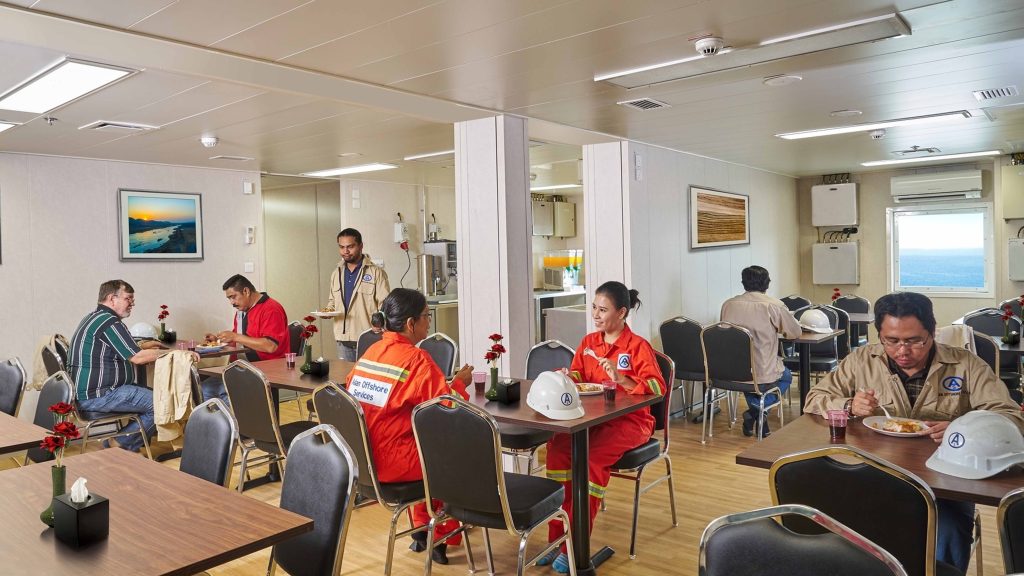May 1, 2024
Navigating workplace wellness post-pandemic: Insights from low-wage employers and their employees
The COVID-19 pandemic triggered seismic shifts in the workplace, particularly for the low-wage workforce. These employees, many of whom could not do their jobs from home, faced heightened risks for virus exposure, financial strain, limited access to healthcare, and new work protocols, underscoring the urgent need for targeted and holistic support in the workplace. In response, researchers from Connect to Wellness (CtW), an evidence-based workplace wellness program developed by the University of Washington, surveyed and interviewed employers and employees across the nation to better understand their shifting needs amidst unprecedented adversity.

At the start of the pandemic, the CtW team, which includes Peggy Hannon, professor and director of the Health Promotion Research Center (HPRC), research scientist Kristen Hammerback, research coordinator Michelle Strait, and other staff and investigators at HPRC, focused on training health departments to deliver the program. However, “Because of the starring role health departments played during the pandemic, it was very difficult for most of them to take on something new like workplace wellness,” said Hannon. So, the team added collecting real-time data from CtW’s intended recipients to their activities. “We decided to go to the source, to talk to employers and employees about what they need and want from wellness programs,” said Hammerback. “We wanted the program to be responsive rather than hang onto pre-pandemic concepts which may now need to evolve.”
Employer Interviews
In the fall of 2020, the team interviewed employers across Washington state, “We wanted to understand how they made decisions about running their businesses in the height of the pandemic,” said Hannon. “We also wanted to understand how connected they were to their health departments and whether they would be willing to work with them.” From those interviews, the team learned that employers wanted specialized information pertaining to their sector and tailored insights to help them protect the health of their employees and their businesses. Most were not connected with their local health department but were willing to hear from them.
“Overwhelmingly these small employers found themselves completely unprepared to face a challenge like a pandemic,” said Hammerback. “They were making critical decisions without a clear roadmap. Their sense of confusion and worry was palpable.” These sentiments were synthesized in one of the papers published by the team titled, “By the Seat of Our Pants,” a direct quote from one of the interviewees. “At the time, there were so many papers discussing job losses and business closures which focused on quantitative impact data, but the human narrative was often overlooked,” said Hannon. “We wanted to shed light on the personal experiences of business owners striving to navigate challenges and do their best under extraordinary circumstances.”
Employee Surveys
The team also surveyed a large representative sample of full and part-time workers from low-wage industries to better understand their views and priorities for workplace health promotion. Before the pandemic, research had shown employees cared most about nutrition and physical activity, but the pandemic revealed new concerns. “We found employees still care about their physical health, but we also saw an increased need for support with their mental and emotional health, such as work-life balance, sleep, and stress,” said Hammerback. This was true among both English-speaking and Spanish-speaking respondents.
Another finding from the surveys showed a correlation between employees’ age and the impact of the pandemic. Though the physical risks from contracting COVID-19 increase based on age, “younger individuals were more likely to report impacts from the virus, particularly around emotional and mental well-being,” said Hammerback. “Younger people have always cared about these topics, but the pandemic really magnified their importance, and we saw this reflected in what health departments told us as well.”
Perhaps the biggest change in both employer and employee attitudes was the extent to which people voiced their need for support and resources. “We’ve had so many employers tell our team and health departments that people really need mental health help, and they need us to help them, and we never heard that 5-10 years ago,” said Hannon. Similarly, Strait noted, “Health departments and employers were trying their best to support employees, but they needed and wanted more support from workplace wellness programs.”
Moving Forward
Though the pandemic made it more difficult to recruit health departments to deliver CtW, the team did enroll twenty-one health departments across thirteen states. These health departments function at the local, tribal, and state levels and provide the program to businesses in their jurisdiction. “I’m excited about the direction the program is headed. Particularly, in expanding the program to include more support for mental and social health, as employers and employees asked,” said Hannon. The team also plans to expand CtW to include support for hybrid or remote workplaces.
As they continue to adapt and expand the program, Hannon, Hammerback, and Strait hope CtW can continue to remove barriers for low-wage workers to access workplace wellness. Said Hammerback, “Across our focus groups, interviews, and surveys employees were articulate about their own health goals and the ways their employers could help them. Incorporating their feedback and adapting the program accordingly is the right path forward.”